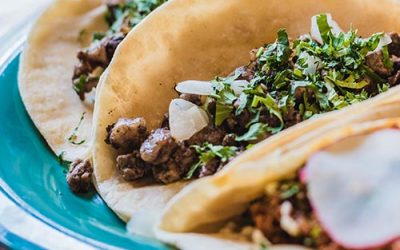Have you seen colorful paper chiseled with a variety of patterns adorned on the streets, restaurants or during parties? These lovely decors are called papel picado and are used at parties, family gatherings or as simple decorations at home. They are also being used as an offering for the Day of the Dead or during Easter. Papel picado originated from Mexico. In Mexico, there’s no celebration without music, flowers and papel picado!
Papel picado means “punched paper.” The tradition of using papel picado originates from the practices by Aztecs. The Aztecs covered a bark textile called amatl (paper) with melted rubber and paint on it. They used it to decorate religious sculptures, shrines and burials. This was the reason why up to now, people have the misconception that the paper used for papel picado was cut by the Aztecs to be used as decors. There have been no supported claims that this is true but San Salvador in Puebla State is said to be where papel picado originated. Locals from San Salvador started cutting paper flags, but it was only during the late 1920’s that they traveled to a neighboring town to sell their paper flags. After many years, it had become a tradition to decorate the Day of the Dead with papel picado. Today, the tradition of using papel picado on certain occasions has been extended all throughout Mexico.
Papel Picado Patterns and Symbolism
Did you know that different colours of papel picado signify different celebrations? Mexico, like any other country in the world, has a rich history – starting with their papel picado history.
- Mexican Independence Day
The Mexicans celebrate their Independence Day on September 16th, and as always, no Mexican celebration would be complete without the colorful papel picado. Green, white, and red are the colors that dominate in these paper decorations with the pattern of the country’s emblem or the faces of Mexican war heroes to show the people’ patriotism.
- Christmas
Christmas is another season where you can find many papel picado adorning the streets of Mexico. Pink, Sky Blue, white, and red are the colors that you would mostly find on papel picado for Christmas. The papel picado during this time will be cut in the shape of baby Jesus, Virgin Mary, Saint Joseph, angels, and other shapes that symbolize the season.
- Day of the Dead
Day of the Dead or Día de Muertos is one of the events that Mexicans observe to honor and remember their deceased loved ones. Most of the designs found in papel picado today have been adopted from the creations of Jose Guadalupe Posada. His illustrations include skeletons, skulls, and Catrina with yellow, pink, orange, and purple as the major key tones.
- Weddings, birthdays, and other celebrations
Papel picado has been part of the life of Mexicans. In whatever event they celebrate, they never forget to hang papel picado on their homes and streets. The styles and designs of papel picado are also customized during these personal events with vibrant colors.




